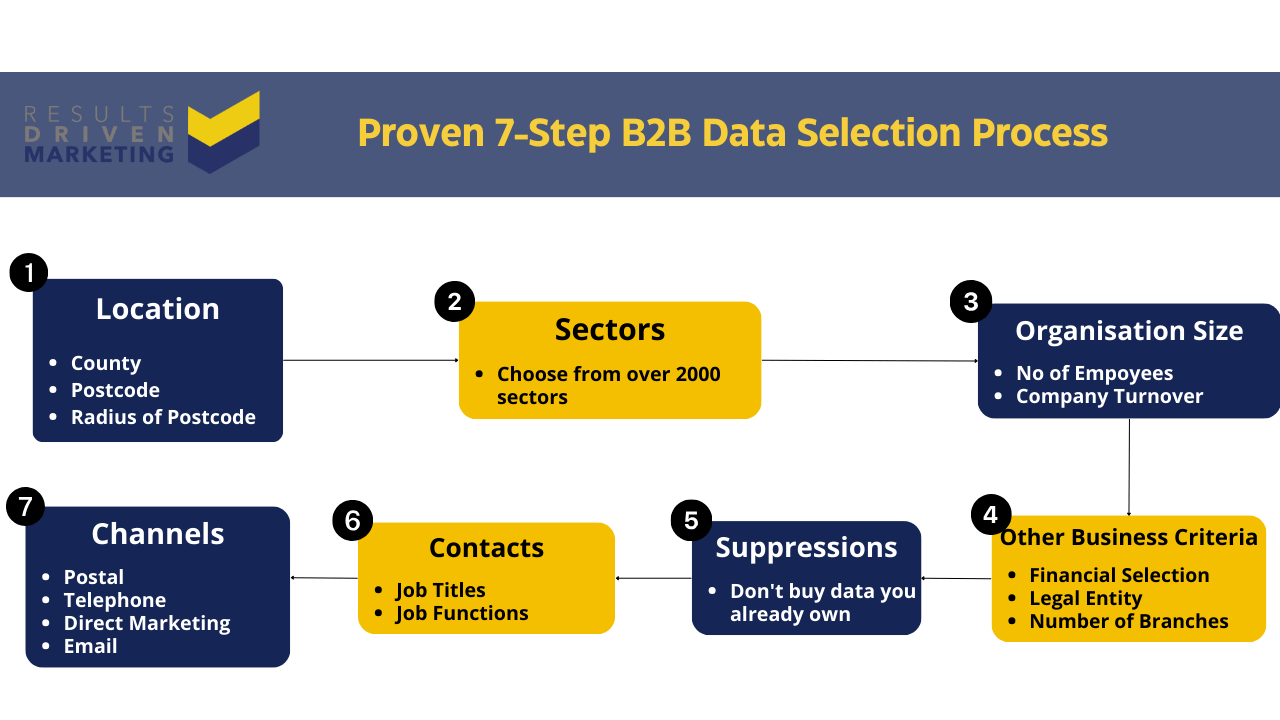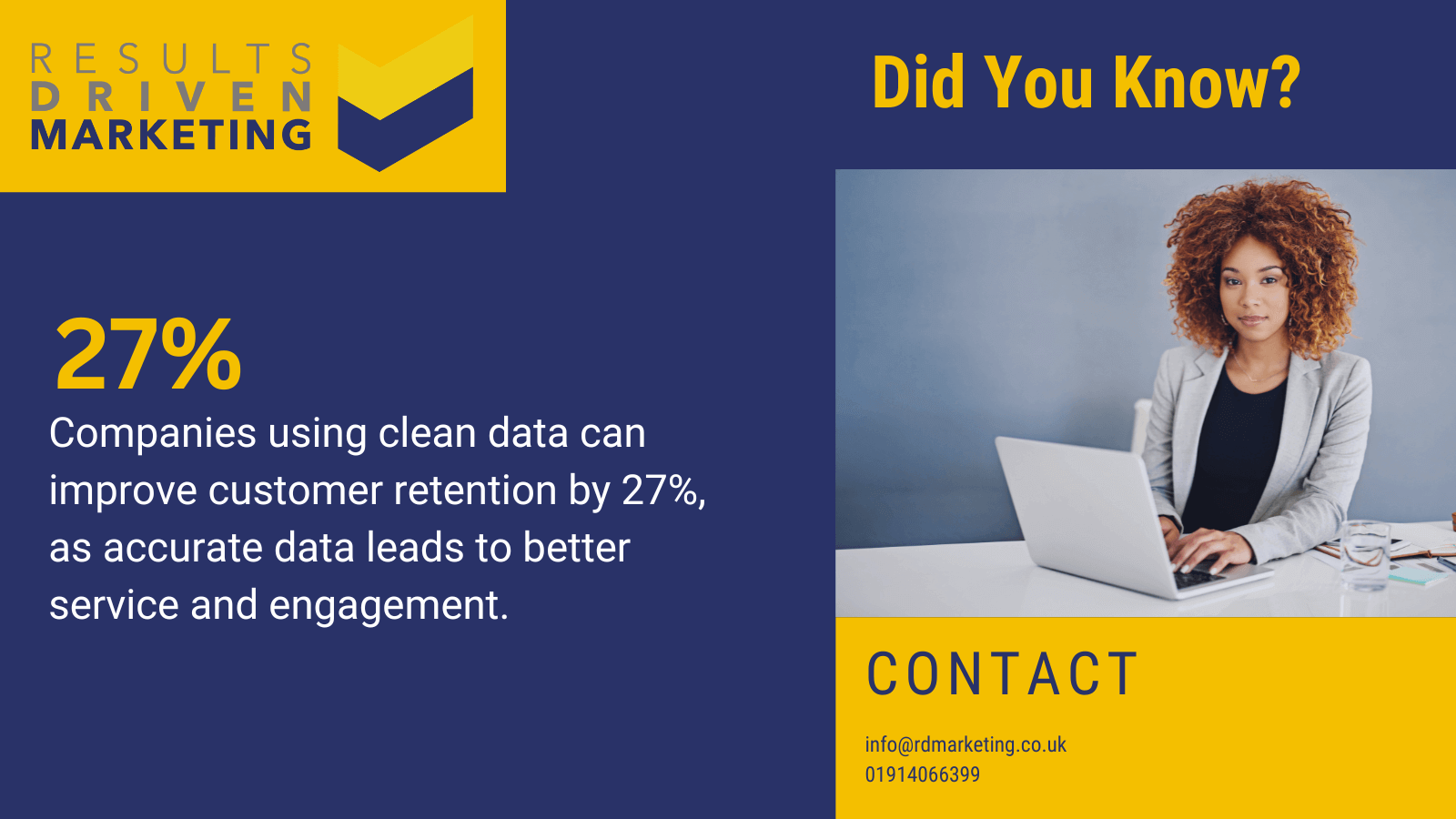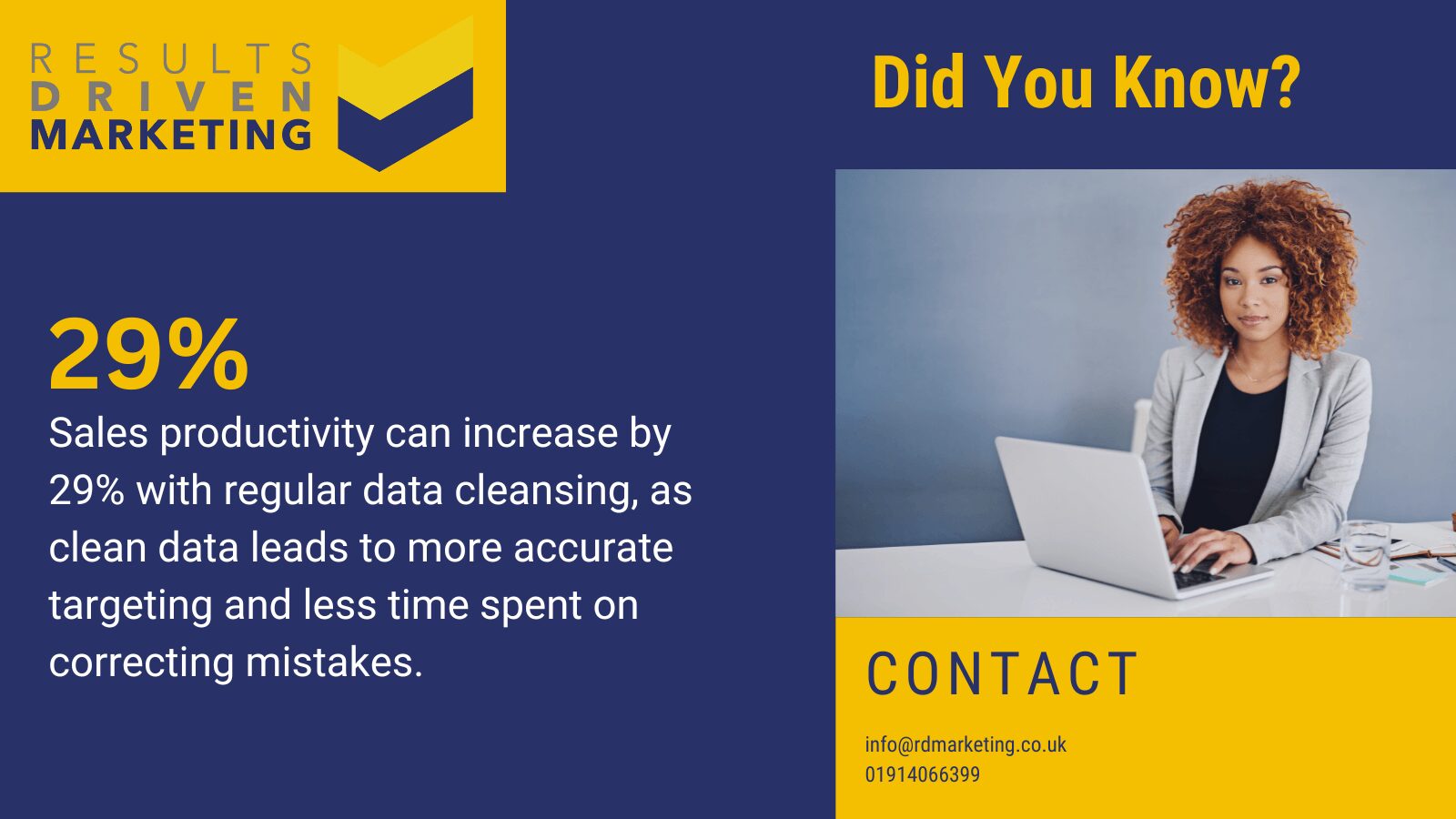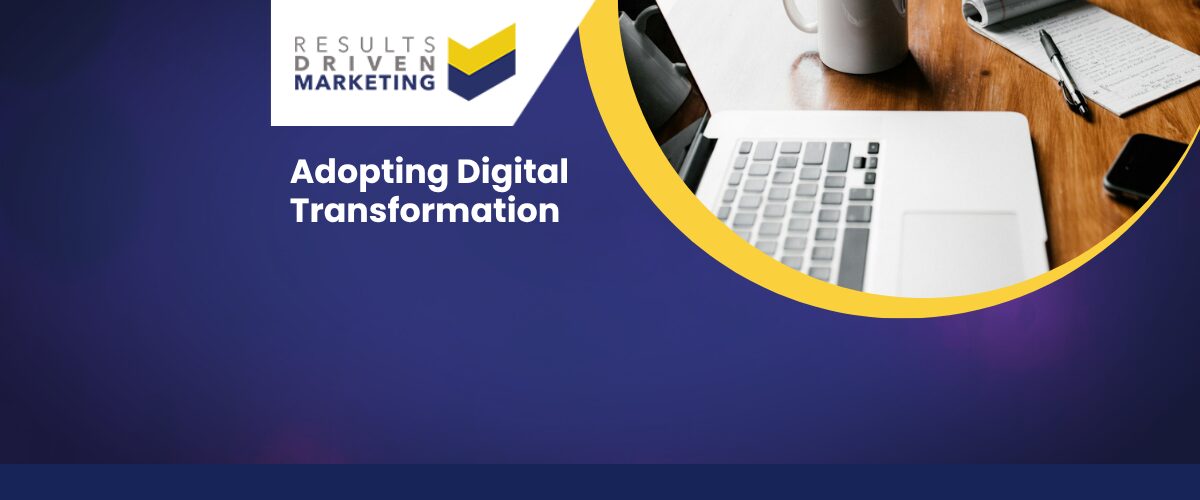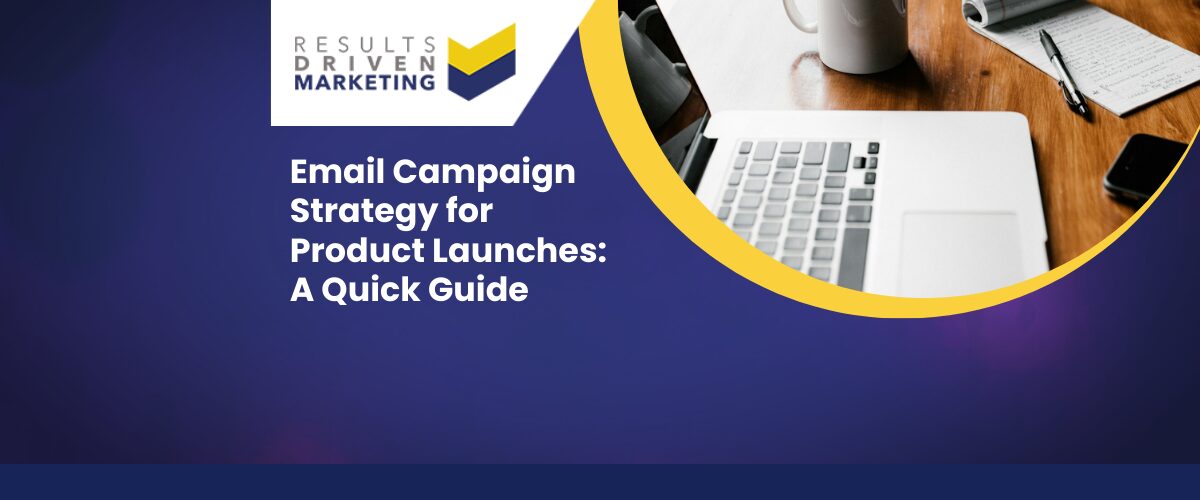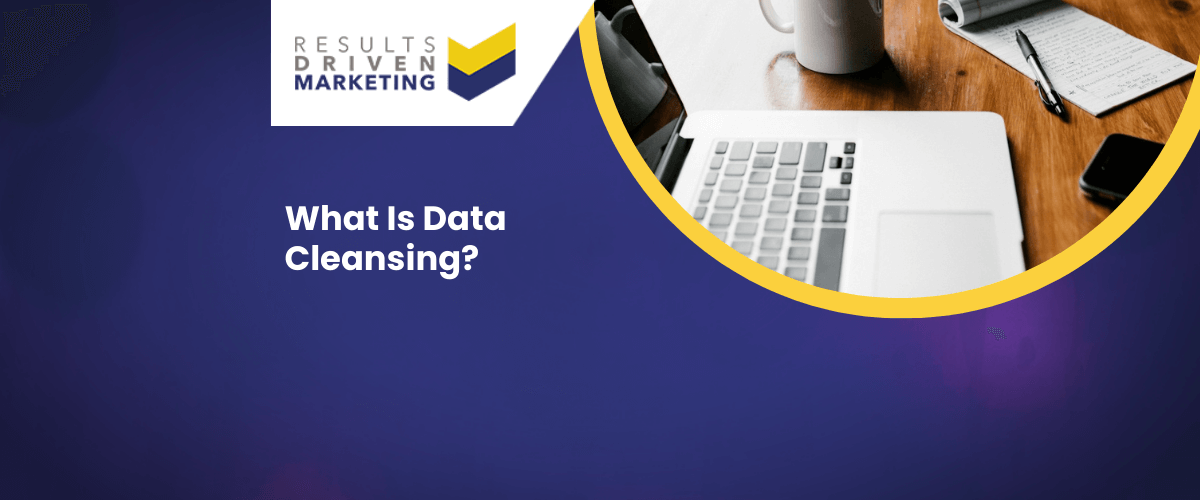
What Is Data Cleansing?
Data cleansing is the process of identifying and correcting inaccurate, outdated, or duplicate information within a dataset to ensure your database stays reliable, compliant, and useful for business activity.
In a world where marketing, sales, and customer engagement all depend on accurate information, clean data has become non-negotiable. Without proper data cleansing, campaigns fall flat, outreach is misdirected, and opportunities are lost before they even start.
For businesses that rely on email address list data or engage in regular direct mail or telemarketing activity, poor data quality doesn’t just mean wasted time — it directly impacts ROI and compliance, especially with GDPR and CTPS regulations in play.
In this guide, we’re going to cover:
-
What data cleansing actually involves and why it’s critical
-
The most common types of data issues and how to fix them
-
Step-by-step methods and best practices
-
Tools, services, and tips for ongoing data hygiene
-
How data cleansing services like those from RD Marketing can help you improve performance and reduce risk
Whether you’re using your database for targeted email marketing, B2B data prospecting, or to support wider digital campaigns, keeping it clean is one of the smartest investments you can make.
Table of contents:
What Is Data Cleansing?
So, what is data cleansing exactly? In a nutshell, data cleansing—also known as data cleaning or data scrubbing—is the process of reviewing and improving a dataset by identifying and fixing errors such as incomplete, inaccurate, irrelevant, or duplicated data.
Think of it as tidying up a cluttered room: everything is still there, but now it’s better organized and much more useful. In business, clean data is crucial because it forms the foundation for accurate decision-making, reporting, and analysis. When your data is unreliable, the decisions you make based on that data can lead to poor outcomes.
The process of data cleansing involves several critical steps:
- Identifying and Rectifying Errors: This is the core of data cleansing services. It starts with identifying errors like incorrect customer addresses, outdated phone numbers, or missing fields in a database. Once identified, the data needs to be corrected or removed to maintain accuracy.
- Dealing with Duplicates: Another common problem is data duplication. Imagine running a B2B telemarketing campaign and calling the same contact multiple times. Not only is this inefficient, but it can also annoy potential leads. Data cleansing tools help identify and remove these duplicates, streamlining your operations.
And also….
- Filling in Missing Information: Sometimes, data records are incomplete. This can be anything from missing names or emails in a customer database to blank fields in financial records. Filling in these gaps is essential, especially when running campaigns that rely on clean a email list.
- Correcting Inaccuracies: It’s all too easy for human error to creep into data entry processes. Wrong phone numbers, spelling errors, or incorrect postal codes can significantly disrupt operations. Regular data cleaning helps to ensure that your direct mail data is always accurate and up-to-date.
- Standardising Data: Data from different sources often comes in different formats. For example, phone numbers could be recorded in various formats (with or without country codes), making it hard to process. Data scrubbing ensures consistency and makes it easier to analyse and utilise your information.
Let’s take a specific example to clarify this concept. Say you manage a customer relationship management (CRM) system, and your company has recently acquired new customer data from different sources. You might find several records with outdated contact details, inconsistent email formats, or duplicated entries.
Why Is Data Cleansing Important?
When we ask what is data cleansing and why it’s so crucial, the answer comes down to one thing: quality. Poor data quality can lead to a host of problems that can severely impact a business. Imagine making business decisions based on incorrect or incomplete information. It’s like driving blindfolded—you’re bound to crash at some point.
Let’s break down the consequences of poor data quality:
- Misinformed Business Decisions: Decisions are only as good as the data they’re based on. Poor data can result in misguided strategies, misallocated resources, and lost opportunities. For instance, a marketing team that runs campaigns using outdated or incorrect customer information is unlikely to see a positive return on investment (ROI). If you’re using inaccurate B2B data or email address list data, you might even be sending your message to the wrong audience, which wastes time and money.
- Wasted Resources: When a business spends time and resources on data that isn’t accurate, it’s essentially throwing away money. Take telemarketing, for example—imagine calling the same customer twice because your records aren’t properly cleansed. Not only is it inefficient, but it also annoys potential leads. This is why regular data cleansing is a must, especially for teams working with telemarketing data.
- Regulatory Risks: In today’s environment, regulatory compliance is critical, especially when it comes to personal data. Businesses that fail to keep their data clean may find themselves out of compliance with laws like the GDPR. Poorly maintained records can lead to penalties, not to mention damage to the business’s reputation. Companies can avoid these risks with tools like our CTPS checker, which ensures compliance with telemarketing regulations.
Now, let’s talk about the benefits of data cleansing:
- Improved Decision-Making: Clean data leads to better insights, which means smarter decisions. When your customer or business data is accurate, you can trust the analytics that guide your marketing and sales strategies. For instance, businesses using cleansed international email list data are able to target global customers more precisely, leading to higher engagement rates.
- Accurate Reporting: Accurate data ensures reliable reporting. Financial departments, for instance, rely on clean records to generate reports that reflect the true state of the business. This accuracy is vital for everything from budgeting to performance tracking.
- Increased Customer Satisfaction: With clean data, you can tailor your communication to the right people at the right time. Customers don’t want irrelevant emails, and they certainly don’t want to be contacted multiple times due to duplicated entries. Data cleansing services help ensure that your messaging is timely and relevant, improving the overall customer experience.
- Compliance with Regulations: Whether you’re sending out direct mail or managing large customer databases, regulatory compliance is critical. Clean data can help your business remain compliant with data protection laws, avoiding fines or legal issues. Our data cleansing services and data enrichment services help businesses maintain clean, up-to-date information, ensuring compliance with regulations like the GDPR.
Let’s take a look at a real-world example: A large retail company discovered that a significant portion of its customer database contained duplicate entries and outdated contact information. This was causing issues in its marketing campaigns, resulting in high bounce rates and wasted resources.
After undergoing a thorough data cleansing process, the company saw a marked improvement in its email deliverability and customer engagement rates, thanks to accurate consumer data. Sales increased as the company was able to reach more of its actual customer base with relevant, personalised messages.
The Data Cleansing Process
So, what is data cleansing in terms of the actual steps involved? Data cleansing is a structured, multi-step process designed to transform messy, inaccurate datasets into reliable, usable information. This process typically includes several key stages, all working together to ensure your data is clean and ready for use. Let’s break it down:
Data Auditing – Identifying Errors and Issues
The first step in the data cleansing process is data auditing. This involves analysing your dataset to pinpoint any problems or inconsistencies. You might find errors like incomplete entries, invalid values, or data points that don’t match your expected patterns.
At this stage, you’re essentially scanning for anything that doesn’t belong or looks incorrect. Think of this as the diagnostic phase—you’re figuring out where the problems are. For businesses using large datasets, such as B2B data or consumer data, auditing is critical for understanding the extent of the errors before diving into the actual cleaning.
Removing Duplicates – Eliminating Redundant Information
Once you’ve identified the errors, the next step is to get rid of any duplicate entries. Duplicates are a common issue, especially in customer databases where the same individual might appear more than once due to data imports from multiple sources.
Whether you’re using email address list data or handling telemarketing data, duplicates can be a big headache. They waste resources, especially in marketing efforts, and can skew analytics. By eliminating these redundant records, you ensure that each entry in your dataset is unique and usable.
Correcting Errors – Fixing Inaccuracies and Misformatted Data
Now comes the task of correcting errors in the data. This can involve fixing spelling mistakes, correcting outdated or misformatted fields, and ensuring that each piece of data adheres to the required format.
For instance, if you’re working with an international email list, you might find inconsistencies in how email addresses are formatted, especially when mixing data from different regions. During this stage, you’ll also verify the data—making sure that phone numbers, emails, and addresses are accurate.
Filling in Missing Data – Completing Incomplete Records
Often, you’ll find that your data has gaps—missing information that’s crucial for your business operations. Filling in missing data is a core part of the data cleansing process.
This could involve anything from tracking down missing contact information in a direct mail data campaign, to ensuring customer demographics are fully populated for better marketing segmentation. Without completing these records, you run the risk of incomplete insights or campaigns that don’t fully reach your target audience.
Standardising Data – Ensuring Consistency in Data Entry
Finally, standardising data is the step where you make sure that all entries follow the same formatting and structure. For example, in a database with global contacts, some addresses might use different formats for postal codes, or phone numbers may lack country codes.
This is where data standardisation comes into play, making sure everything follows a consistent pattern, making your data easier to analyse and use. For businesses using data enrichment services, standardisation ensures that the additional information added to your datasets aligns perfectly with existing records.
How These Steps Work Together
All these steps—auditing, removing duplicates, correcting errors, filling in missing data, and standardising—work together to ensure that the final result is a clean, usable dataset. Whether you’re conducting an email marketing campaign through email marketing management services or targeting a specific segment using consumer data, a well-cleansed database helps you avoid errors, improve your targeting, and make smarter, more informed decisions.
In the end, what is data cleansing if not a vital process for ensuring that your data serves your business objectives? Clean, accurate, and complete data is a competitive advantage, especially in industries like marketing and sales, where accurate customer information drives results. If you’re struggling with messy data, check out our data cleansing services to help get your data back on track.
Data Cleansing Challenges
When businesses embark on a data cleansing journey, it’s not always smooth sailing. There are several challenges that companies often encounter, each with its own set of obstacles. While what is data cleansing may seem straightforward in theory, applying it to real-world datasets—especially large ones—can be quite complex. Let’s take a closer look at some of the most common data cleansing challenges and how to tackle them.
Large Volumes of Data
One of the biggest hurdles businesses face is simply the size of their datasets. In today’s data-driven world, companies manage B2B data, consumer data, and everything in between.
These massive volumes of information can be overwhelming, and the larger the dataset, the more challenging the data cleansing process becomes. When you’re working with tens of thousands (or even millions) of records, manually reviewing and cleaning the data is nearly impossible.
Solution: Automation is key here. By using data cleansing services that incorporate advanced automation tools, businesses can handle large volumes of data more efficiently.
These tools can identify patterns, detect duplicates, and clean up inaccurate entries at scale, saving significant time and effort. Our email marketing management services, for example, ensure that email lists are kept clean and accurate with minimal manual intervention.
Time-Consuming Processes
Let’s be honest—data cleansing can be a time-consuming task. Even small datasets require attention to detail. Verifying contact information, correcting typos, and standardising formats can quickly eat into your team’s valuable time, especially if you’re working with international email list data or direct mail data for targeted marketing campaigns.
Solution: Outsourcing data cleansing tasks is a great way to speed up the process while maintaining quality. When businesses partner with professional data cleansing services, they can focus on core activities while ensuring that their data is accurate and reliable. Companies like ours specialise in handling these time-consuming tasks efficiently. Plus, using automated tools and processes can further streamline the cleansing work.
Lack of Automation Tools
Not all businesses have access to the best data cleansing software or automation tools. Without the right technology, the data cleansing process often becomes manual, leading to human errors and slower progress.
Whether you’re working with B2B telemarketing lists or email address list data, automation can make a world of difference in both the speed and accuracy of your data cleaning efforts.
Solution: Investing in automation tools or partnering with data management experts is the way to go. Our data enrichment services, for instance, not only help clean up datasets but also enhance them by adding missing or relevant information, all with the help of cutting-edge technology.
This takes the heavy lifting out of your hands and ensures that your data stays clean and useful.
Inconsistent Data from Multiple Sources
Another common challenge is dealing with inconsistent data that comes from various sources. For instance, you may have a CRM database filled with customer information, but some of that data might come from online forms, while other parts are gathered from telemarketing campaigns.
The result? A patchwork of inconsistent formats and standards. One customer’s phone number might include a country code, while another doesn’t. One address could be fully spelled out, while another might use abbreviations. This lack of consistency makes it harder to analyse and work with your data effectively.
Solution: Standardisation is essential here. A data scrubbing process should include steps to format data uniformly across all sources. Using automated tools or outsourcing to experts in data cleansing services will help ensure that data from different origins is consistently formatted and ready for use.
Our CTPS checker, for example, is perfect for standardising and ensuring compliance with telemarketing regulations, preventing any inconsistencies when it comes to contact data.
Tackling These Challenges Head-On
Addressing these challenges requires a combination of the right tools, the right processes, and sometimes, the right partners. Whether it’s dealing with large datasets, saving time through automation, or standardising inconsistent data, solutions are readily available to streamline the process.
Clean data means better decisions, more efficient marketing, and, ultimately, more successful business outcomes. If you’re feeling overwhelmed by any of these challenges, our data cleansing services are designed to take the burden off your shoulders and help you maintain high-quality, actionable data.
Tools for Data Cleansing
When it comes to the data cleansing process, using the right tools can make all the difference. While understanding what is data cleansing is crucial, knowing which tools to use can help streamline the entire process, making it faster, more accurate, and less resource-intensive.
Let’s take a closer look at some of the popular data cleansing tools available today and how they can benefit businesses.
Excel (for Basic Data Cleansing)
For those just getting started, or for businesses dealing with smaller datasets, Excel is a go-to tool for basic data cleansing. While Excel is more known as a spreadsheet software, it’s also incredibly versatile when it comes to cleaning data.
Key features include:
- Sorting and filtering data to identify duplicates or missing values.
- Conditional formatting to highlight inconsistencies or errors in data entries.
- Text functions like TRIM or FIND/REPLACE to clean up messy entries.
Excel is perfect for handling smaller projects, like cleaning up direct mail data or a targeted email address list, especially when you’re working with a more manageable dataset. However, for larger, more complex data sets, you’ll need more robust tools.
OpenRefine
For those looking to go beyond Excel, OpenRefine is an open-source tool designed specifically for cleaning and transforming messy data. Originally called Google Refine, OpenRefine is particularly good at handling large, inconsistent datasets.
Features:
- Clustering algorithms to detect and group similar but slightly different data (such as variations in names or addresses).
- Faceted browsing, which allows you to filter and explore data quickly.
- Undo/redo functionality, so you can backtrack if a cleansing step goes wrong.
OpenRefine is especially useful for cleaning up B2B data or consumer data, where datasets often come from multiple sources, and inconsistencies in the data are frequent. It’s a solid choice for anyone looking to efficiently standardise and clean data from disparate origins.
Talend
Talend is a powerful data integration tool with robust data cleansing capabilities. This enterprise-grade software offers a variety of data quality tools to help businesses cleanse, enrich, and transform their datasets.
Notable features:
- Data profiling: Talend automatically assesses your data and identifies potential errors, helping to spot inconsistencies and problems early.
- Data integration: Seamlessly integrates with other systems, making it perfect for large-scale data cleansing, especially when working with complex international email list data.
- Automation: Once set up, Talend automates much of the data cleansing process, making it a time-saver for businesses.
With its high-level automation, Talend is an ideal solution for businesses managing large datasets and looking to streamline their data cleansing services. It’s a great tool for any company working with a wide range of data, whether it’s customer databases, telemarketing data, or CRM systems.
Trifacta
Trifacta is another excellent tool designed to make data preparation fast and easy. It combines machine learning with a user-friendly interface to simplify the data scrubbing process, even for those without extensive technical expertise.
Key features include:
- Visual data profiling, allowing users to see patterns, outliers, and anomalies in their datasets.
- Smart recommendations that suggest transformations and corrections as you work.
- Integration capabilities, making it easy to connect with other platforms and data storage systems.
Trifacta is particularly suited for data teams working on complex datasets that require a lot of customisation. For example, if you’re preparing a large database of B2B telemarketing contacts, Trifacta helps you clean and optimise it for better outreach results.
Informatica Data Quality
Finally, Informatica Data Quality is an enterprise-grade data management solution specifically designed to maintain data integrity. It’s often used by large companies that need ongoing data quality management, rather than one-time cleansing projects.
Key features:
- Real-time data cleansing, allowing businesses to correct data as it’s being entered or imported.
- Data enrichment, which enhances your dataset by adding missing or valuable information.
- Built-in compliance checks, helping businesses meet regulatory standards, such as GDPR compliance, when working with customer data.
Informatica is a powerful choice for industries that need continuous data quality assurance, such as financial institutions or healthcare providers.
If your company deals with highly sensitive or regulated data, this is the tool to ensure it’s always up-to-date and compliant. You can also pair it with tools like our CTPS checker to further ensure compliance, especially in telemarketing efforts.
Choosing the Right Tool for Your Business
The right tool for you will depend on the size of your dataset, the complexity of your data, and the specific challenges you face. For small to medium-sized businesses working with marketing campaigns, basic tools like Excel or OpenRefine may be sufficient.
However, if you’re managing a large dataset of international email list data or running a complex CRM system, more robust tools like Talend or Informatica might be a better fit.
In any case, if you’re looking to improve the quality of your data without doing all the heavy lifting yourself, outsourcing to a professional data cleansing service is a great option. At RD Marketing, we offer a wide range of data services, from data enrichment services to email marketing management services, designed to ensure your data is always clean, accurate, and ready to deliver results.
Best Practices for Data Cleansing
Now that we’ve explored what is data cleansing and the tools available, it’s time to dive into some best practices. Effectively cleaning data isn’t just a one-time job; it requires consistent effort and a strategic approach.
Businesses that follow certain best practices can maintain data quality over the long term, ensuring that their decisions, marketing efforts, and customer relationships are backed by accurate and reliable information. Here are some key strategies to follow.
Regularly Schedule Data Audits and Clean-Ups
Data quality can degrade over time, which is why it’s important to schedule regular data audits. By doing so, you can catch errors, duplicates, and inconsistencies before they grow into larger problems.
Think of data audits as routine check-ups that keep your data in good health. Whether you’re managing email address list data or a large database of B2B data, regular check-ups ensure your data is clean and usable.
For instance, businesses running email marketing management services know that outdated or incorrect email addresses lead to higher bounce rates and lower engagement. Regular clean-ups prevent such issues, keeping your campaigns effective and your email deliverability rates high.
Use Automated Tools Where Possible
Manual data cleansing can be time-consuming and error-prone. That’s why automated tools are a lifesaver when it comes to handling larger datasets. Automation helps businesses clean data faster, identify patterns of errors, and ensure accuracy with minimal human intervention.
For example, if you manage a direct mail data campaign, automated tools can swiftly remove duplicates, fill in missing information, and correct inconsistencies in address formats.
Automation is particularly helpful when working with complex datasets like international email list data, where manual cleansing would be too labor-intensive. By using tools like Talend or Trifacta, you can speed up the process and significantly reduce human error.
Standardise Data Entry Procedures Across Teams
One of the leading causes of data issues is inconsistent data entry. Whether it’s typos, different formatting styles, or incomplete fields, inconsistent entries can wreak havoc on your data quality.
A simple fix? Standardise data entry procedures across all departments and teams. Everyone should be on the same page when it comes to how data is entered—whether it’s filling out customer information for telemarketing data or inputting addresses for consumer data.
Providing a clear set of data entry guidelines—covering everything from how to enter phone numbers and addresses to handling missing information—ensures that data remains consistent and clean over time. You can even take it a step further by using data validation rules in your CRM or database to prevent incorrect data from being entered in the first place.
Train Employees on the Importance of Data Accuracy
Clean data isn’t just the responsibility of your IT or data teams—everyone in the company plays a role. That’s why it’s crucial to train employees on the importance of data accuracy.
Whether it’s a marketing team entering leads into the CRM or a customer service representative updating customer profiles, employees need to understand the impact of bad data on the business. Poor data quality can result in miscommunication, regulatory issues, and lost opportunities.
By incorporating data accuracy training into onboarding or regular team meetings, businesses can foster a culture of responsibility and attention to detail. Employees should be aware of the downstream consequences of bad data, especially when working with CTPS checker tools to ensure compliance in telemarketing efforts, or cleaning up customer information for B2B telemarketing campaigns.
Real-World Example: The Impact of Consistent Data Cleansing
To show the impact of following these best practices, let’s look at a real-world example. A retail company was struggling with inaccurate customer data, which resulted in ineffective email marketing campaigns. After auditing their data, they discovered that nearly 30% of their customer emails were either incorrect or outdated.
By scheduling regular data audits, using automated cleansing tools, and retraining staff on data entry procedures, the company significantly improved their email deliverability and customer engagement rates.
Additionally, they implemented a data enrichment service to fill in missing customer details, allowing them to better segment and target their audience. This combination of best practices not only saved them time and resources but also boosted their sales by improving the quality of their marketing efforts.
Conclusion
Adopting these best practices—regular audits, automation, standardised data entry, and employee training—will help ensure that your data remains accurate, consistent, and actionable. Clean data leads to better decision-making, more successful marketing campaigns, and ultimately, stronger business results.
If you need assistance in keeping your data in top shape, consider our data cleansing services and data enrichment services. We offer a range of solutions tailored to your business needs, ensuring your data is always clean, accurate, and ready to drive growth. For more information on how we can help, visit our website at RD Marketing.
The Impact of Data Cleansing on Business Performance
When we talk about what is data cleansing, we’re not just discussing an abstract process that tidies up your database. Clean data is a foundational asset for driving business performance.
The impact of regular data cleansing can be felt across various areas of a business, from boosting marketing ROI to ensuring compliance with regulations like GDPR. Here’s how clean data directly contributes to key business outcomes:
Increased Sales and Marketing ROI
For any business, marketing campaigns are only as effective as the data they rely on. Whether you’re using B2B data for a sales campaign or email address list data for an email marketing blast, having clean data ensures that your messages are reaching the right audience.
With accurate, up-to-date information, your sales and marketing efforts become far more targeted, reducing wasted spend on reaching incorrect or irrelevant contacts.
For example, a company running a direct mail data campaign with outdated addresses would be throwing money away on undelivered mail. But with data cleansing services, they can ensure that their customer information is accurate, boosting the chances of their mailers landing in the hands of the right people. In the long run, this translates to better ROI on every marketing dollar spent.
Enhanced Customer Segmentation and Targeting
Clean data is crucial for effective customer segmentation and targeting. Businesses rely on accurate demographic, behavioral, and transactional data to create personalised marketing campaigns that resonate with different customer segments. When the data is dirty—full of duplicates, outdated information, or incomplete records—it becomes nearly impossible to properly segment your audience.
For instance, when managing international email list data, inaccurate data could lead to incorrect targeting by country, language, or preferences, reducing the relevance of your communication.
By regularly cleansing and enriching your data with tools like our data enrichment services, businesses can better understand and segment their audience, leading to more personalised offers and increased customer engagement.
Better Reporting and Analytics
Business decisions are only as good as the data behind them. When you have clean data, your reporting and analytics are accurate, leading to more informed decision-making. Imagine running a quarterly report on sales performance, but your data is filled with errors or duplicates.
The result would be skewed insights, causing misaligned strategies. Clean data ensures that your reports are based on reliable, accurate information, giving you a true reflection of your business performance.
For businesses using telemarketing data, this could mean more accurate tracking of call outcomes and conversion rates. Similarly, in industries that rely on strict reporting standards, clean data ensures compliance with those requirements, keeping your business on track for growth.
Who are we?
Thinking about “how do I buy data“?
Providing b2b database solutions is our passion.
Offering a consultancy service prior to purchase, our advisors always aim to supply a database that meets your specific marketing needs, exactly.
We also supply email marketing solutions with our email marketing platform and email automation software.
Results Driven Marketing have the best data of email lists for your networking solutions as well as direct mailing lists & telemarketing data in telemarketing lists
We provide data cleansing and data enrichment services to make sure you get the best data quality.
We provide email marketing lists and an international email list for your business needs.
At RDM We provide b2c data as we have connections with the best b2c data brokers.
A good quality b2b database is the heartbeat of any direct marketing campaign…
It makes sense to ensure you have access to the best!
Call us today on 0191 406 6399 to discuss your specific needs.
Results Driven Marketing
0191 406 6399


